 Every one who knows me, knows my love for Galouti Kababs. Galauti Kababs melt me down, always… as the spiced up minced kebabs melt in my mouth. Galauti Kabab always deserved a separate post in my blog and I had enough material to write on this. But with a hands-on experience on how to make real Galoutis in a Masterclass, that too in the Dum Pakht style of cooking, I feel that I can finally belt out a melting post full of the aroma, with the taste that’s still lingering on in my taste buds. Lingering on from the Galoutis that I just tasted a few days back, prepared by Chef Dirham – a Galouti expert, at the Oberoi Dubai’s fine dining Indian restaurant – Ananta.
Every one who knows me, knows my love for Galouti Kababs. Galauti Kababs melt me down, always… as the spiced up minced kebabs melt in my mouth. Galauti Kabab always deserved a separate post in my blog and I had enough material to write on this. But with a hands-on experience on how to make real Galoutis in a Masterclass, that too in the Dum Pakht style of cooking, I feel that I can finally belt out a melting post full of the aroma, with the taste that’s still lingering on in my taste buds. Lingering on from the Galoutis that I just tasted a few days back, prepared by Chef Dirham – a Galouti expert, at the Oberoi Dubai’s fine dining Indian restaurant – Ananta.  Galouti, Galauti or Galawati? Well, I’ve been on my own trail in search of this special form of Kebab which practically melts in the mouth, lending the name Galawati or ‘the one that melts’. Galauti Kabab is a minced meat round patty cooked over griddle, smoked with aromatic spices (traditionally, there were 120 different spices that were used in Galoutis!). Invented during the rule of Nawab Asaf ud Daula in Lucknow (another princely Indian city that gave birth to the Lucknowi or the Awadhi cuisine), the Galauti Kababs were made specially for him since he had weak teeth and eventually became toothless… yes, that’s the story that has been going around! Another Indian restaurant in Dubai – Patiala restaurant in Souk Al Bahar, claims that their Chef Arif has an ancestral heritage that I can only envy of – his forefathers had been the creators of the famous Galauti Kabab! I also believe that it’s my love for Galautis that has been instrumental in forcing Chef Sanjay Behl, who was till recently at the helm of the Patiala kitchen, to take up a Twitter handle like @galoutiontweet! {Chef Sanjay Bahl | Flavours And Flavours And Flavours of Patiala!}
Galouti, Galauti or Galawati? Well, I’ve been on my own trail in search of this special form of Kebab which practically melts in the mouth, lending the name Galawati or ‘the one that melts’. Galauti Kabab is a minced meat round patty cooked over griddle, smoked with aromatic spices (traditionally, there were 120 different spices that were used in Galoutis!). Invented during the rule of Nawab Asaf ud Daula in Lucknow (another princely Indian city that gave birth to the Lucknowi or the Awadhi cuisine), the Galauti Kababs were made specially for him since he had weak teeth and eventually became toothless… yes, that’s the story that has been going around! Another Indian restaurant in Dubai – Patiala restaurant in Souk Al Bahar, claims that their Chef Arif has an ancestral heritage that I can only envy of – his forefathers had been the creators of the famous Galauti Kabab! I also believe that it’s my love for Galautis that has been instrumental in forcing Chef Sanjay Behl, who was till recently at the helm of the Patiala kitchen, to take up a Twitter handle like @galoutiontweet! {Chef Sanjay Bahl | Flavours And Flavours And Flavours of Patiala!}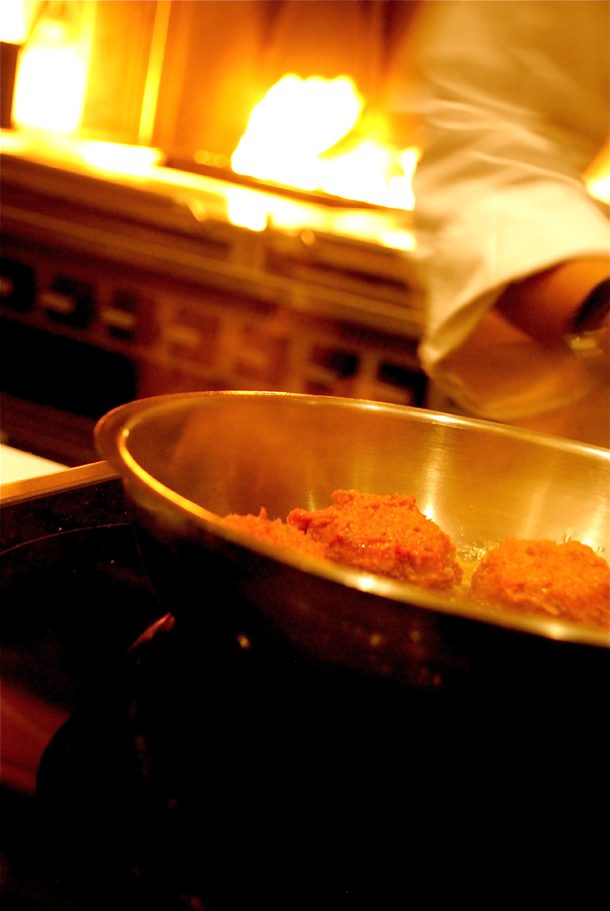 The historical connection between Kolkata and Awadhi Cuisine: For a Kolkatan, North Indian cuisine doesn’t mean the Punjabi cuisine but it means essentially Mughlai food cooked in the Awadhi style. In 1857 AD, after the Awadh kingdom (modern day Lucknow) was annexed by the British, the Nawab or the ruler of Lucknow – Mohammed Wajid Ali Shah Bahadur (1822 AD-1887 AD) was exiled to Calcutta (today’s Kolkata). His passion for gourmet food traveled from Lucknow to Calcutta and was nurtured, garnished and fueled by his special Bawarchis or the Chefs of the Nawab. Although Mughlai food is definitely not Bengali food, a discussion on Kolkata cuisine will remain incomplete without the former. The Biryani or the Kababs that we have grown up eating are the authentic Awadhi Biryani or Awadhi Kababs, cooked in the Dum pukht style. This is the style of cooking where the dish is cooked on very low flame, mostly in sealed containers so that the meat cooks in it’s own juices – the Indian version of the sous vide cooking! In fact, such is my love for the Kolkata Biryani, that a few months back I did end up showcasing the royal Kolkata Biryani in the Lafayette Gourmet. It’s also worth mentioning here about another restaurant in Dubai, although not in the fine dining category, which serves the Mughlai food that I have grown up eating – Shiraz Golden Restaurant in Bur Dubai. {More on Lucknowy or the Awadhi style of cooking and the Dum Pukht}
The historical connection between Kolkata and Awadhi Cuisine: For a Kolkatan, North Indian cuisine doesn’t mean the Punjabi cuisine but it means essentially Mughlai food cooked in the Awadhi style. In 1857 AD, after the Awadh kingdom (modern day Lucknow) was annexed by the British, the Nawab or the ruler of Lucknow – Mohammed Wajid Ali Shah Bahadur (1822 AD-1887 AD) was exiled to Calcutta (today’s Kolkata). His passion for gourmet food traveled from Lucknow to Calcutta and was nurtured, garnished and fueled by his special Bawarchis or the Chefs of the Nawab. Although Mughlai food is definitely not Bengali food, a discussion on Kolkata cuisine will remain incomplete without the former. The Biryani or the Kababs that we have grown up eating are the authentic Awadhi Biryani or Awadhi Kababs, cooked in the Dum pukht style. This is the style of cooking where the dish is cooked on very low flame, mostly in sealed containers so that the meat cooks in it’s own juices – the Indian version of the sous vide cooking! In fact, such is my love for the Kolkata Biryani, that a few months back I did end up showcasing the royal Kolkata Biryani in the Lafayette Gourmet. It’s also worth mentioning here about another restaurant in Dubai, although not in the fine dining category, which serves the Mughlai food that I have grown up eating – Shiraz Golden Restaurant in Bur Dubai. {More on Lucknowy or the Awadhi style of cooking and the Dum Pukht}
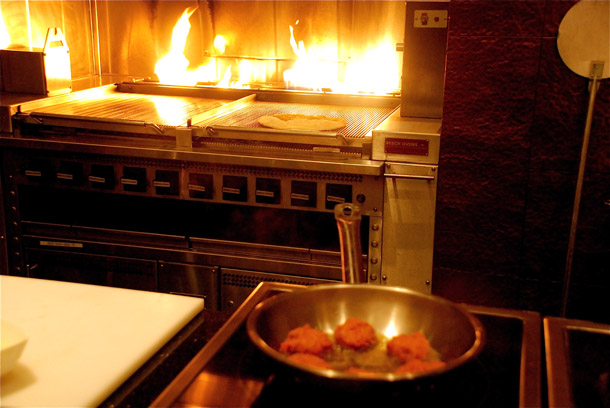
Galouti Kabab
Ingredients
1kg Lamb boti (cubed lamb)
100g Lamb kidney fat
10g Dry Rose Petal flower
60g Ghee or Clarified Indian Butter
15g Green Cardamon Powder
5g Black Cardamon Powder
5g Clove Powder
10ml Kewra Water (Screwpine, more here)
10 ml Rose Water
70g Fried Brown Onion Paste
30g Raw Papaya Paste
1gm Saffron Powder
3g All Spice*
Salt to taste
Method of Preparation
– Mince the Lamb boti and kidney fat together, mince it 7-8 times to get a very fine mince
– Transfer the lamb mince to a big bowl
– Add all the spices above and mix well with your hands
– Refrigerate the marinated mince for about 12 hours
– Heat a flat frying pan. Add Ghee (oh yes, generously!)
– Make small patties of the minced Lamb and shallow fry on a very low heat until the kebabs and cooked and tender
* All Spice is actually a blend of spice that is available in the Indian section of most supermarkets in Dubai (Lulu, Spinneys, Carrefour. If not, then definitely Al Adil Supermarkets would be storing it)
Tips from my hands on experience: Ghee, more Ghee and slightly more Ghee (example of that below) – that indeed is one of the secret ingredients to the Kababs, apart from the very many spices that go into them. The mince taken from the lamb leg is the most judicious choice and marinating it overnight is also one of the key factors that goes in giving out a strong flavour and aroma, something that is so intrinsic to Galoutis. I think, to arrive at the right balance where the minced lamb should be tenderly cooked yet the patties shouldn’t be fried so much as to have a hard crust, is difficult and requires a lot of practice.


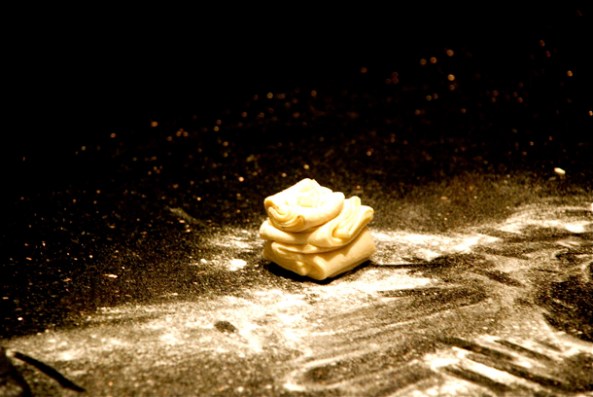
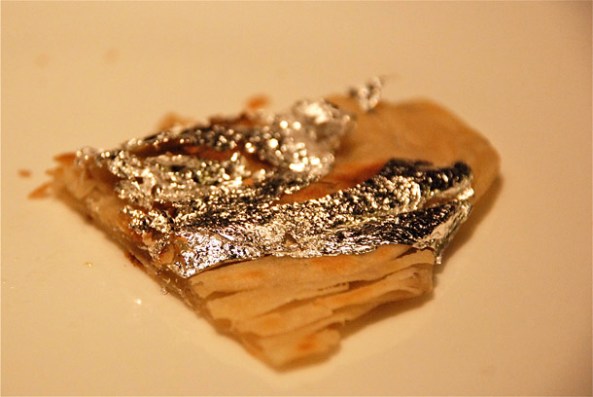 Apart from the Galouti Kababs, I also learnt to make the Warki Paratha that day – a layered wholemeal flat bread with a coronation of edible silver foil on top (above) – a perfect complement to the soft, melting Kababs. All the hard work (to watch with full concentration amidst the aroma and retaining every bit of the knowledge till I downloaded every little detail and and my five-pence of wisdom onto my humble post, is hard work, isn’t it?) was soon compensated by the Royal North Indian thali (further below) that arrived at the table with an Indian Bellini to gulp down the food with. Indian Bellini? My food blogger friend who writes Coffee, Cakes and Running, shares the amazingly easy recipe. Later that day, I found that a reader had left a comment on my Instagram post – ‘Is this a South Indian thali?’ Well, that set me thinking whether serving food in Banana leaves, is also a North Indian tradition or does it confirm only to the South of India and Bengal? Do fill me in if you have any knowledge on this please.
Apart from the Galouti Kababs, I also learnt to make the Warki Paratha that day – a layered wholemeal flat bread with a coronation of edible silver foil on top (above) – a perfect complement to the soft, melting Kababs. All the hard work (to watch with full concentration amidst the aroma and retaining every bit of the knowledge till I downloaded every little detail and and my five-pence of wisdom onto my humble post, is hard work, isn’t it?) was soon compensated by the Royal North Indian thali (further below) that arrived at the table with an Indian Bellini to gulp down the food with. Indian Bellini? My food blogger friend who writes Coffee, Cakes and Running, shares the amazingly easy recipe. Later that day, I found that a reader had left a comment on my Instagram post – ‘Is this a South Indian thali?’ Well, that set me thinking whether serving food in Banana leaves, is also a North Indian tradition or does it confirm only to the South of India and Bengal? Do fill me in if you have any knowledge on this please.
Unblogging it all… Ishita
Disclaimer: Chef Dirham has been flown specially from Gurgaon and his Dum Pukht menu is available at The Oberoi between 22nd – 31st January, 2014. Please note that this post is not a sponsored post and the subject, story, opinions and views stated here are my own and are independent. While you enjoy reading the posts with lot of visuals, please do not use any material from this post. You can see more pictures of my travel and food journey here.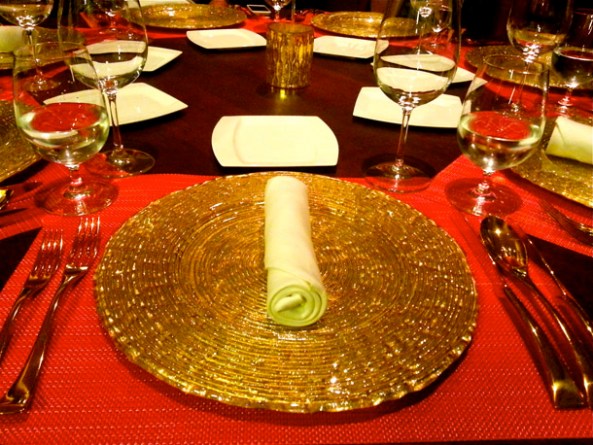

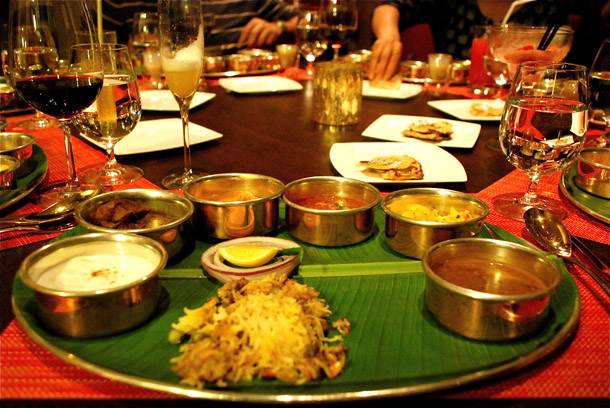

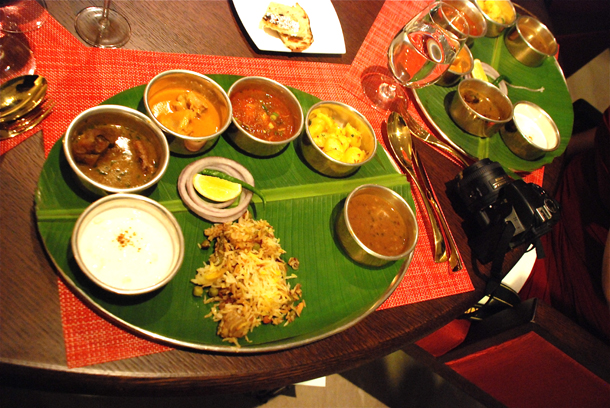
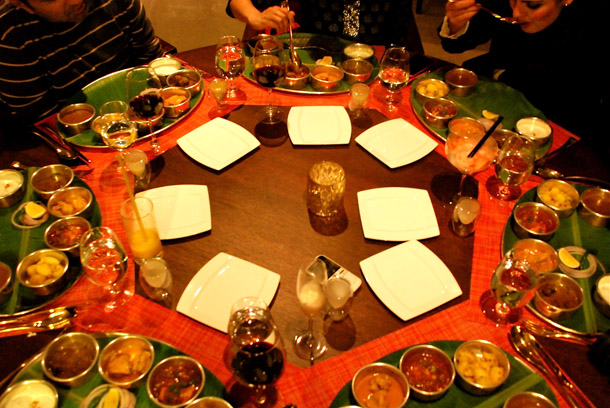


Thanks for the ping back and the interesting read. The research you do behind your posts is always really informative and memories of the evening make me smile.
LikeLike
Thanks Debbie for the warm compliment. I do miss your company when there’s good food around.
LikeLike
Pingback: Dum Pukht – Galouti Kebabs & Indian Bellini | CoffeeCakesAndRunning
Having lived in Lucknow for many many years I am easily disturbed many a times to see very superficial research on Galouti Kababs and the story of their beginning. It was great to read yours 🙂 ….And another secret apart from the ghee…lies in the marination period!
LikeLike
Thank you Neel! So is the marination period that I have mentioned (12 hours) good enough time or it needs to be done for a longer period? Any suggestion as to how we could make the vegetarian version of Galouti preparation – Soya mince perhaps?
LikeLike
The longer the marination the better – 24 hours or even more works….never heard about a veggie version….now you got me thinking…
LikeLike
I totally love galouti kebabs…interesting recipe with the addition of dry rose petals…A great post of what seemed like a great masterclass….Going to put down Ananta as a must visit especially for kababs that are in your photographs:))
LikeLike
Thank you Shy! Well I am yet to comment on the Ananta menu – I haven’t tried anything else apart from these Kababs and a Thali which comes at Dhs 300/person. Even the simple Daal tasted so brilliant – the Ghee, I suppose!!! The Masterclass was very nice and currently this special Dum Pukht Menu will be there for some time.
LikeLike
Love the recipe. But I have never heard of kidney fat 😦 I don’t think I can add it with a clear conscience. I have heard about galouti kabab a lot but never had it. I’ll make ti soon. You are one lucky girl to learn the kabab and the paratha from the experts. 🙂
LikeLike
Thank you! I don’t think I can ever add the kidney fat though. I will not use it when making at home, that’s for sure. Shiraz and other Mughlai restaurants in Kolkata are pretty famous for their Galouti Kabab. It melts in your mouth, not like the standard kababs. Lucky one yes, but that’s why I try to share 🙂
LikeLike
I’ll make them because I have heard about them a lot but never had it. But again, have to think about my high cholesterol. 😣
LikeLike
Also remember the secret of generous Ghee pouring!!!
LikeLike
I know 😦
LikeLike
Totally decadent… I love it!! That thali of foods looks amazing. Happy New Year lovely. Here’s to many more food adventures x
LikeLike
Thank you so much Mallika! Decadent… lovely adjective for Galoutis! North India-te banana leaf-e ki serve kore khabar? Very curious.
LikeLike
Pingback: A gastronomic journey with Indian Accent | Mita's Views
Allspice in itself is a spice that looks a lot like black peppercorn – just little smaller and has a flavour which is a mix of multiple spices (garam masala) thus, giving it that name. It is also called ‘kebabchini’ and many other names across different regions. It also happens to be a core ingredient for Jamaican jerk chicken.
LikeLike
Thank you Amit… huge apologies for having overlooked your comment. Didn’t know this… the use of allspice in Bengali kitchen is very less.
LikeLike
Well kebabchini is cubeb spice that’s used in alot of preparations in lucknow and delhi areas mostly in meat preparations…and the allspice mr. Amit was trying to explain about is totally different thing actually it’s jamaican and is not readily available in india and indian stores worldwide…allspice tastes like cardamom, cloves and cinnamon put together hence the name while cubeb spice is pungent and has a unique flavour so make sure uuh are using the right spice… hope this helps…! !
LikeLike
Pingback: Dum Pukht - Galouti Kebabs & Indian Bellini | CoffeeCakesAndRunning
Pingback: A gastronomic journey with Indian Accent | Middle East Confabulations